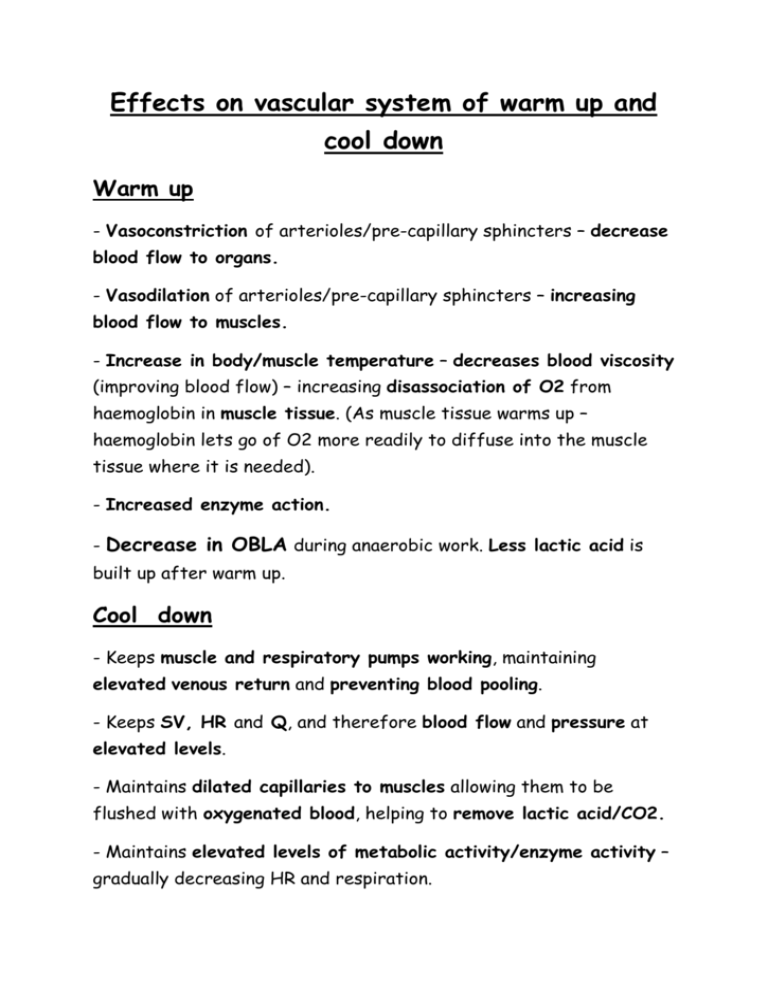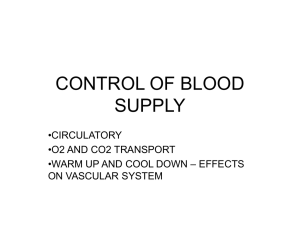Effects on vascular system of warm up and cool down
advertisement

Effects on vascular system of warm up and cool down Warm up - Vasoconstriction of arterioles/pre-capillary sphincters – decrease blood flow to organs. - Vasodilation of arterioles/pre-capillary sphincters – increasing blood flow to muscles. - Increase in body/muscle temperature – decreases blood viscosity (improving blood flow) – increasing disassociation of O2 from haemoglobin in muscle tissue. (As muscle tissue warms up – haemoglobin lets go of O2 more readily to diffuse into the muscle tissue where it is needed). - Increased enzyme action. - Decrease in OBLA during anaerobic work. Less lactic acid is built up after warm up. Cool down - Keeps muscle and respiratory pumps working, maintaining elevated venous return and preventing blood pooling. - Keeps SV, HR and Q, and therefore blood flow and pressure at elevated levels. - Maintains dilated capillaries to muscles allowing them to be flushed with oxygenated blood, helping to remove lactic acid/CO2. - Maintains elevated levels of metabolic activity/enzyme activity – gradually decreasing HR and respiration.











